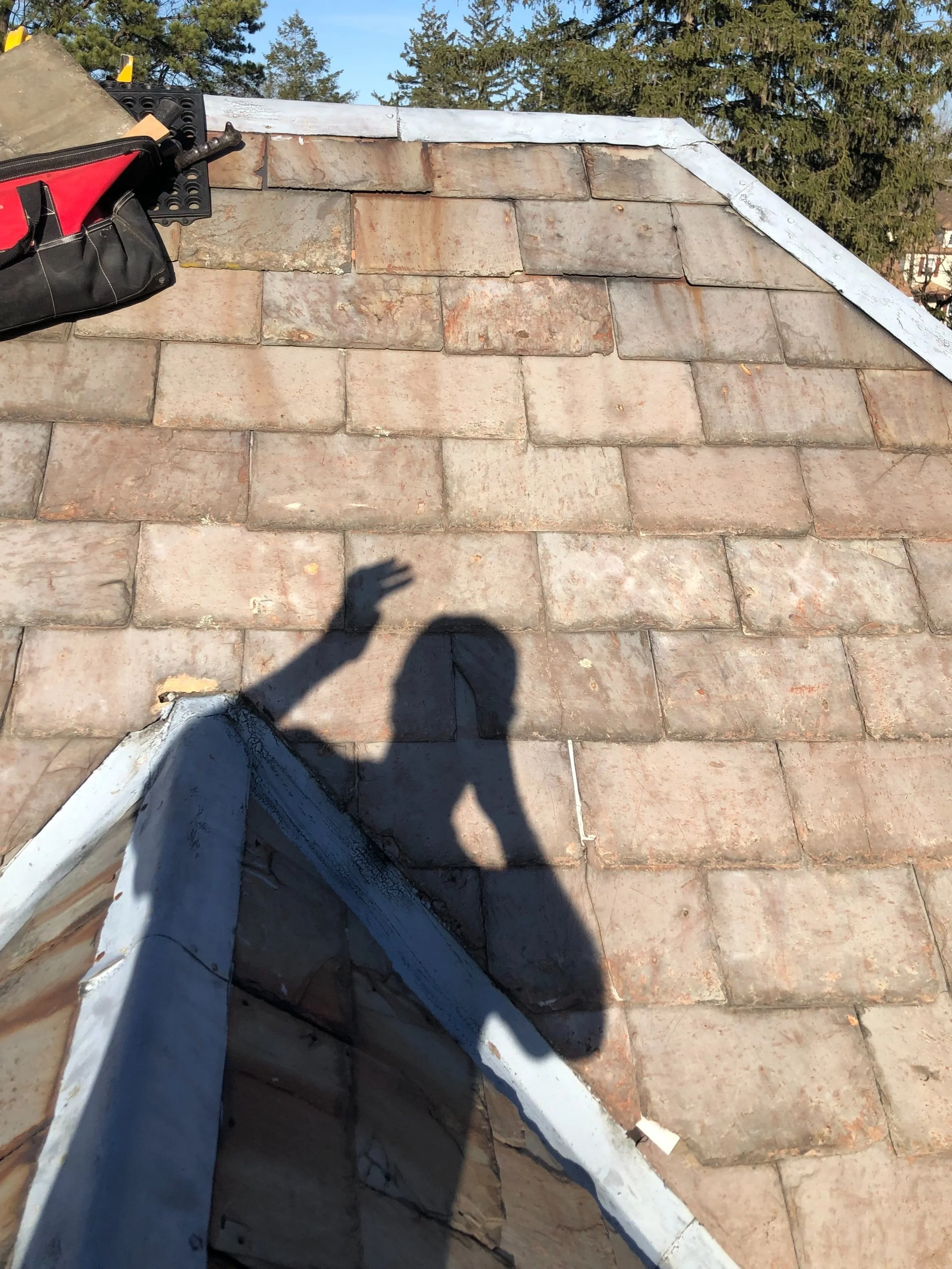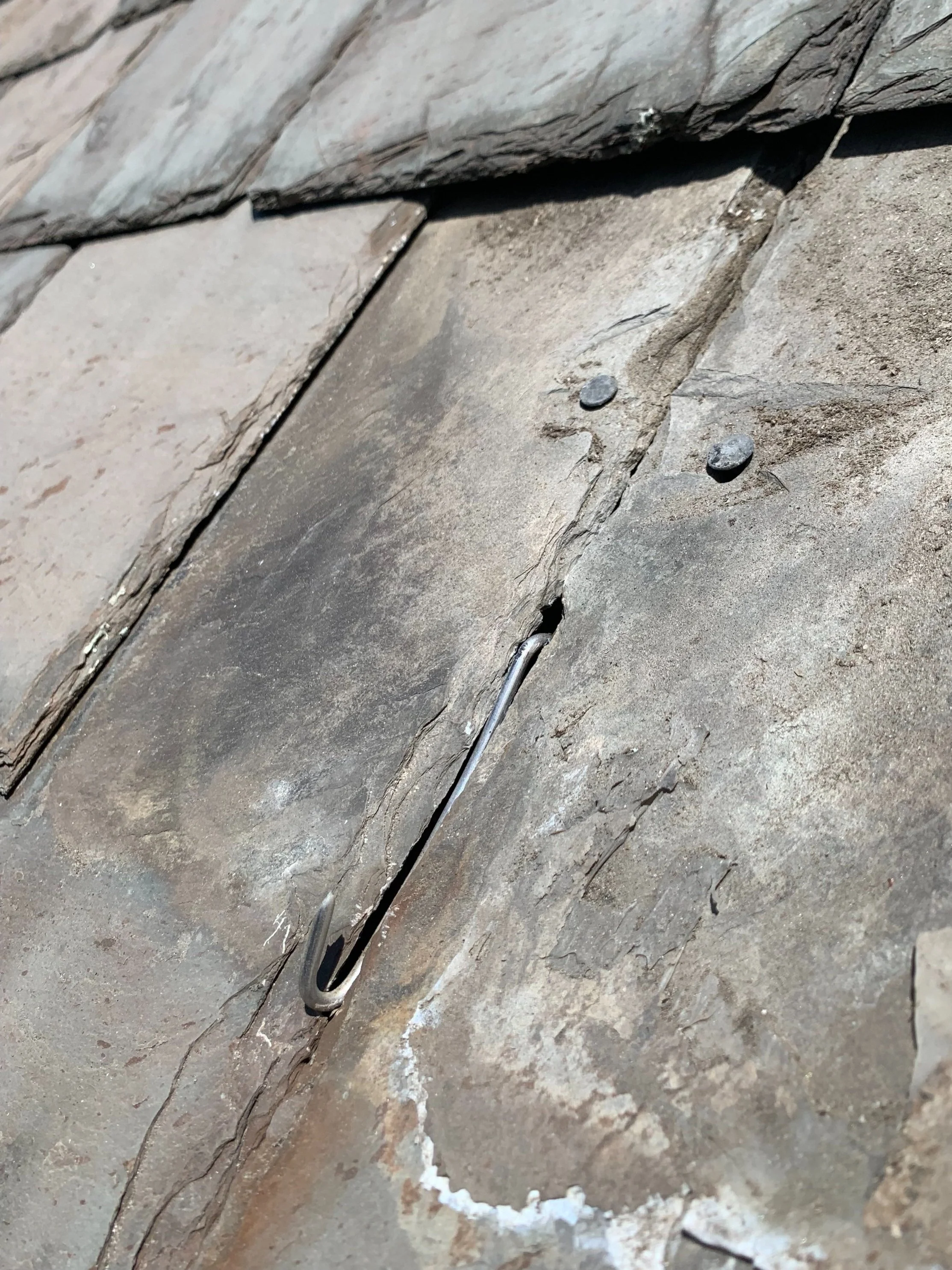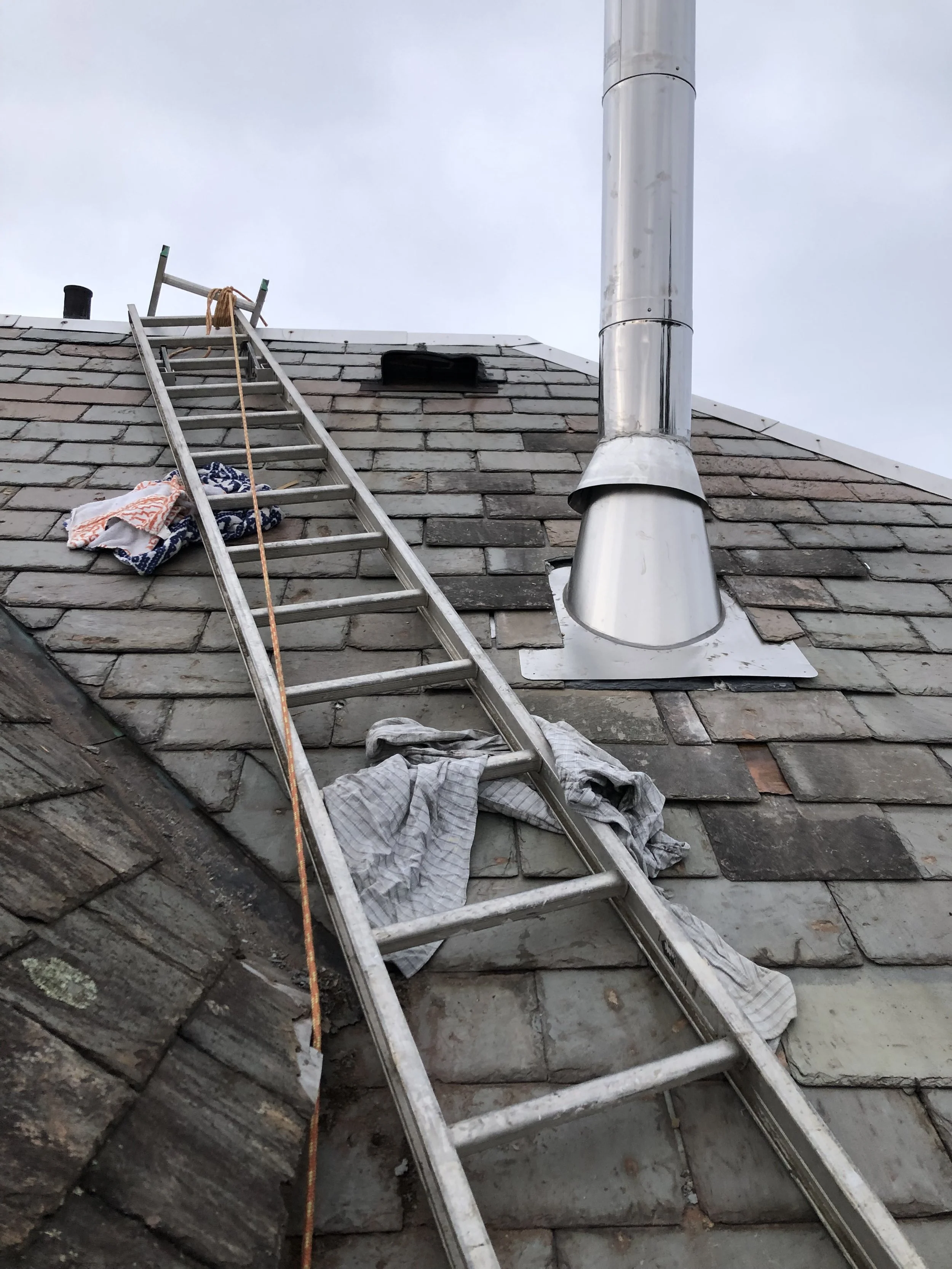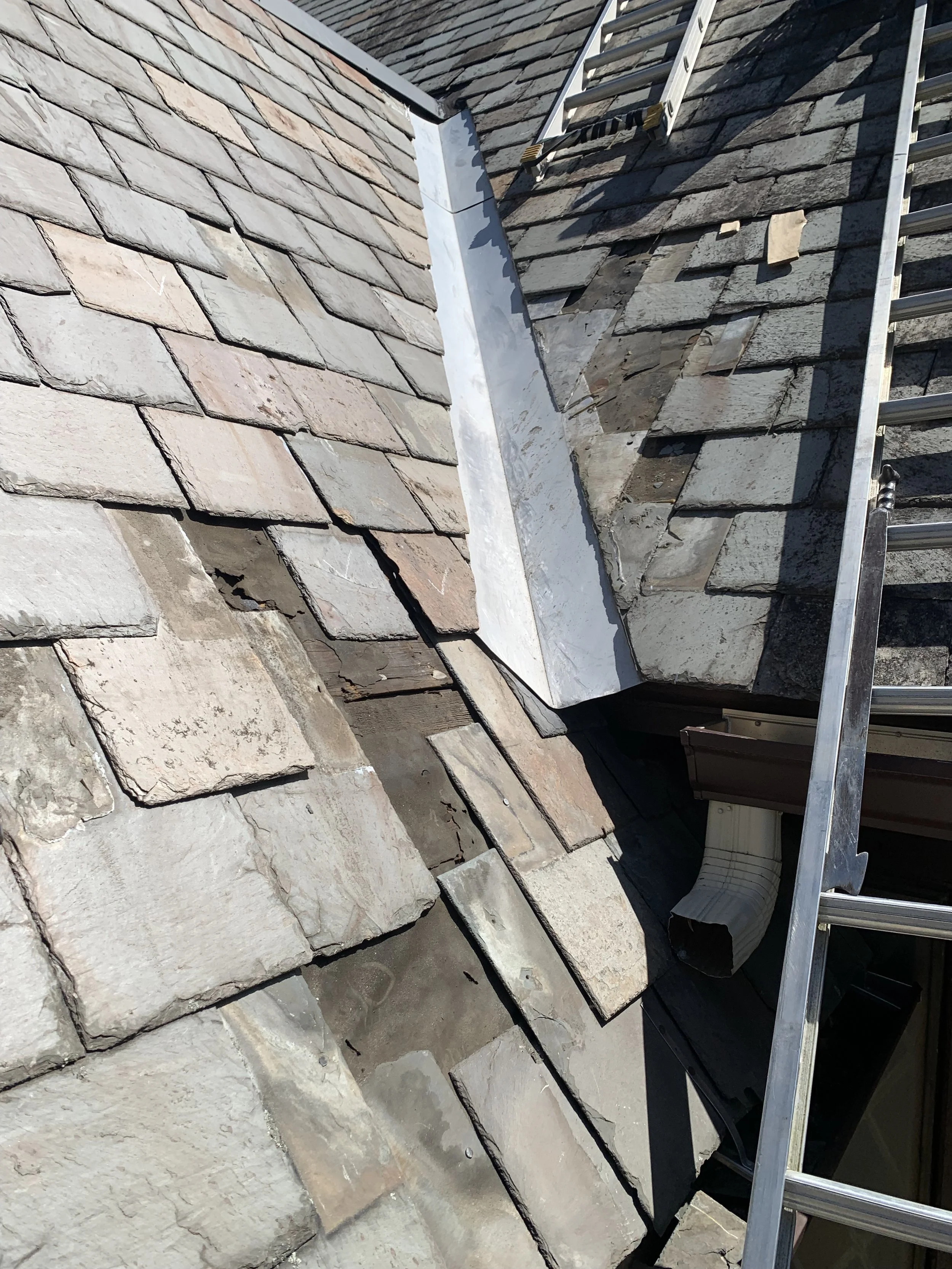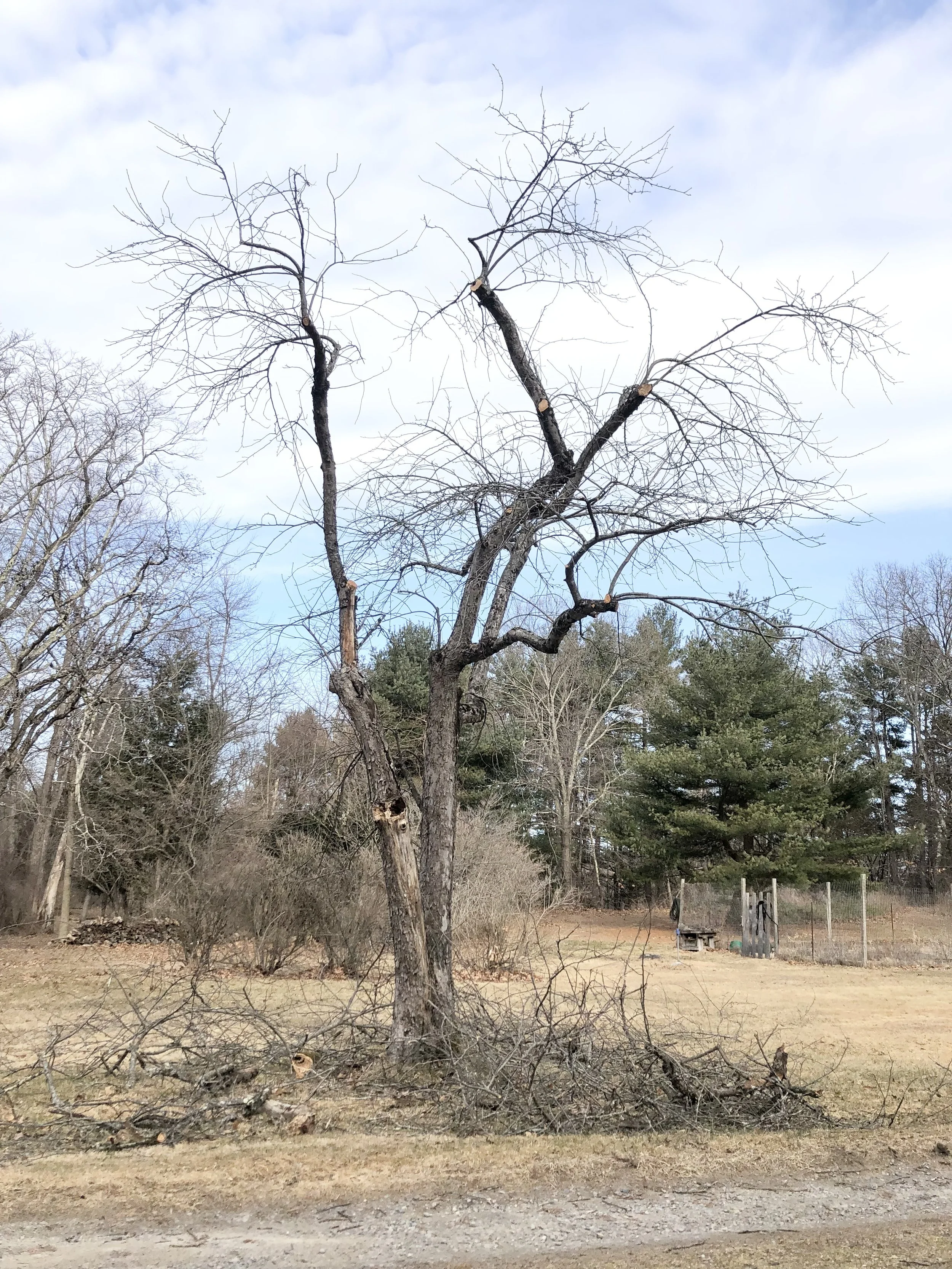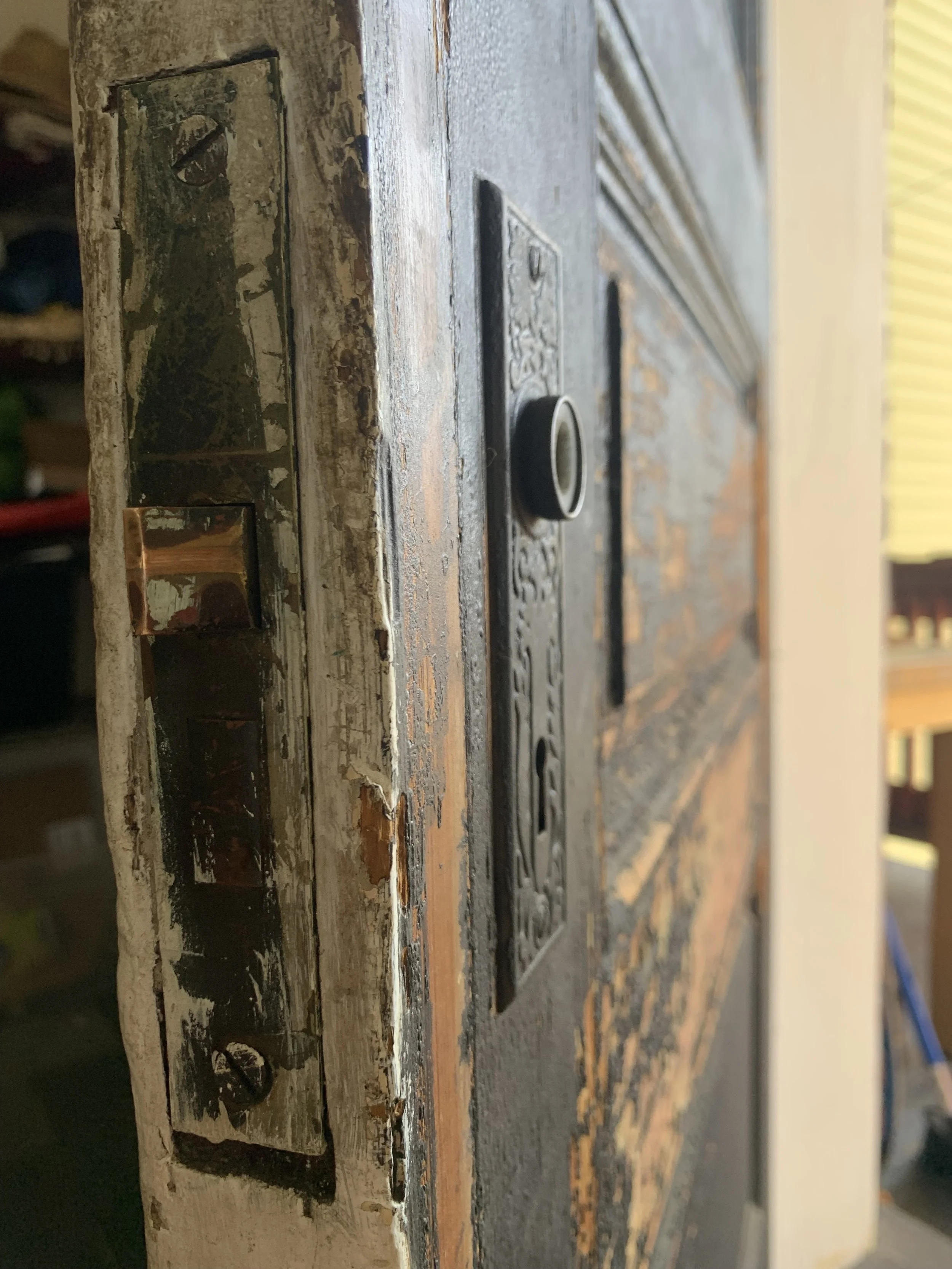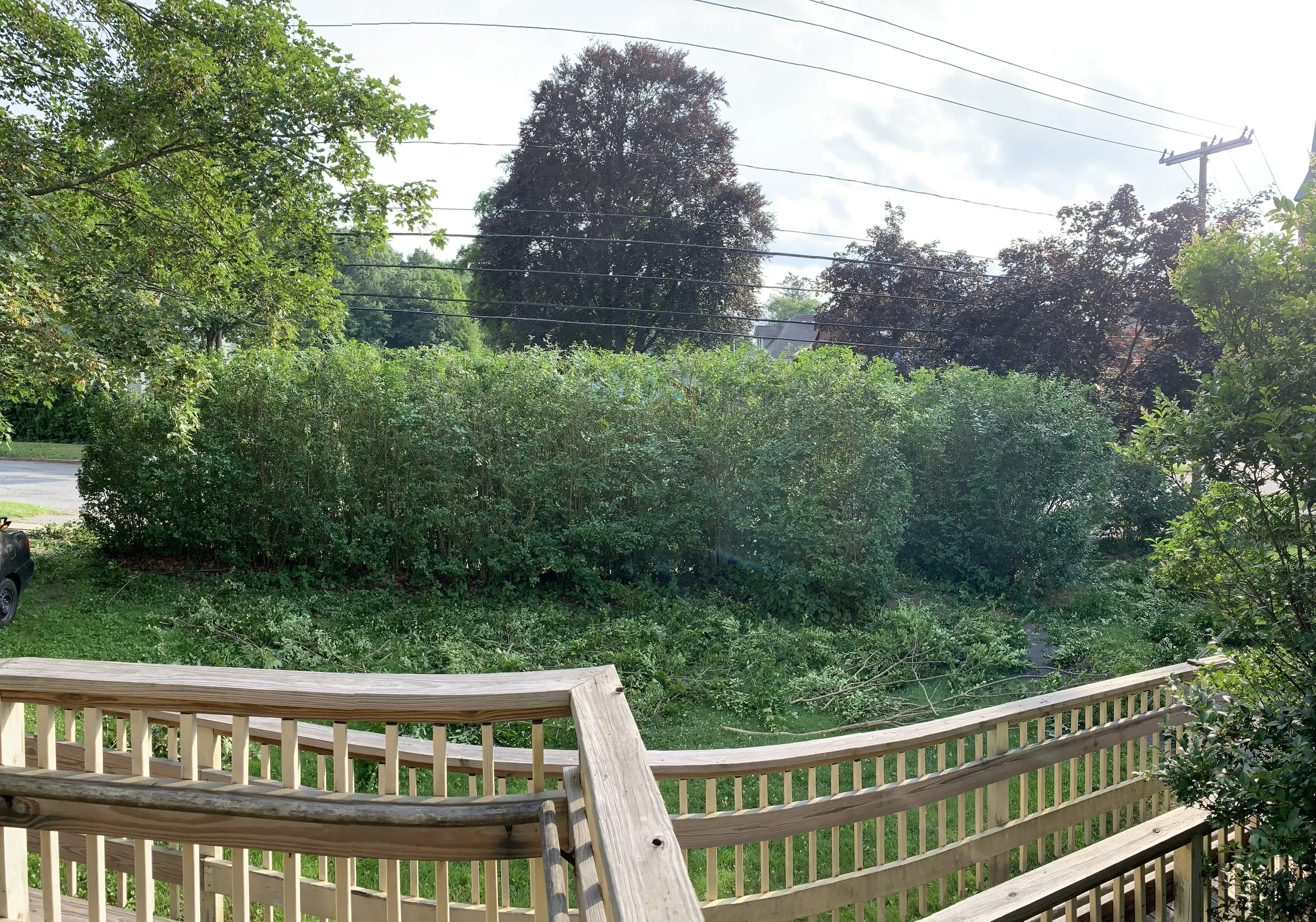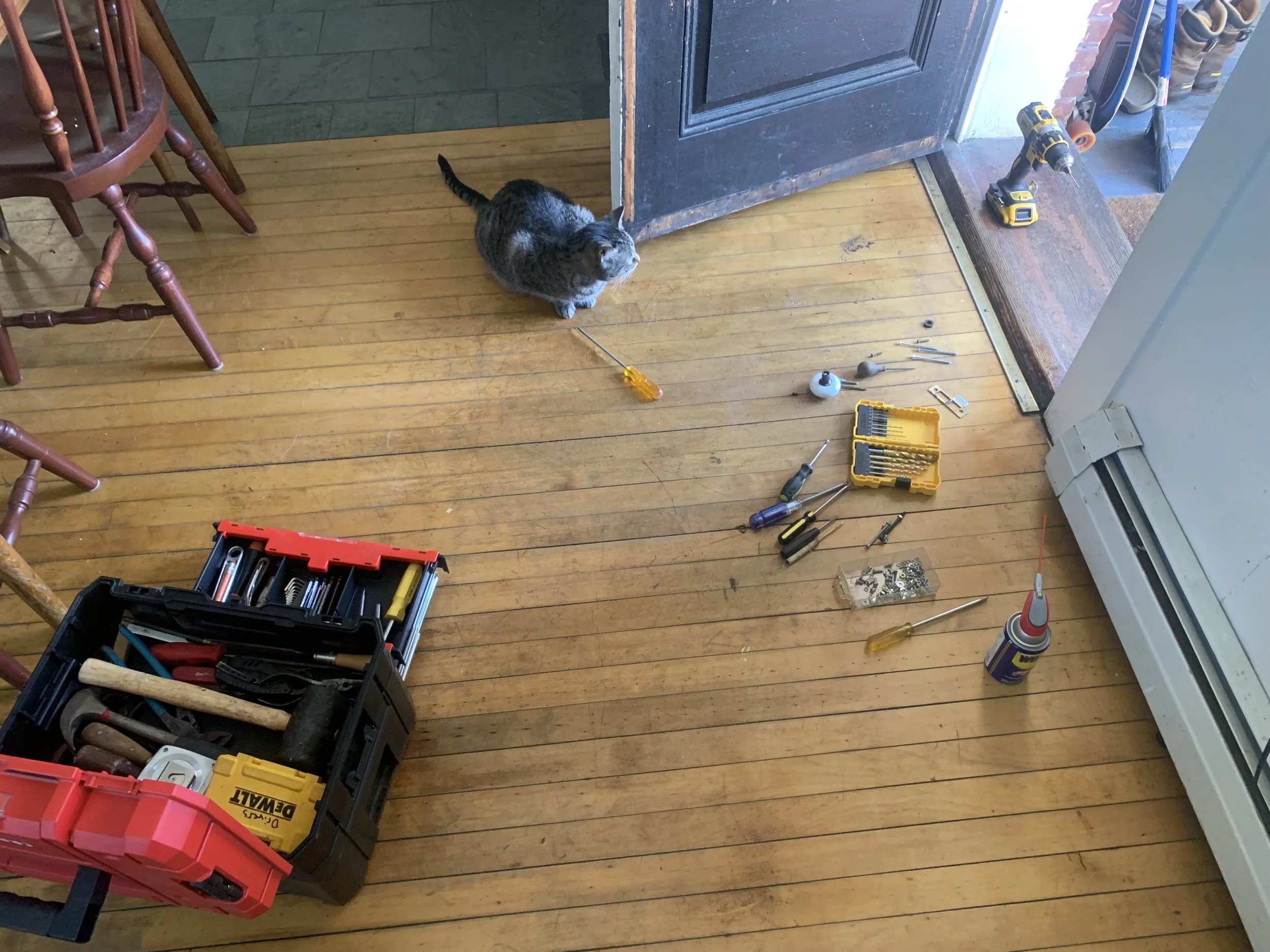SLATE REPAIR
TREE WORK ODD JOBS
Services
-
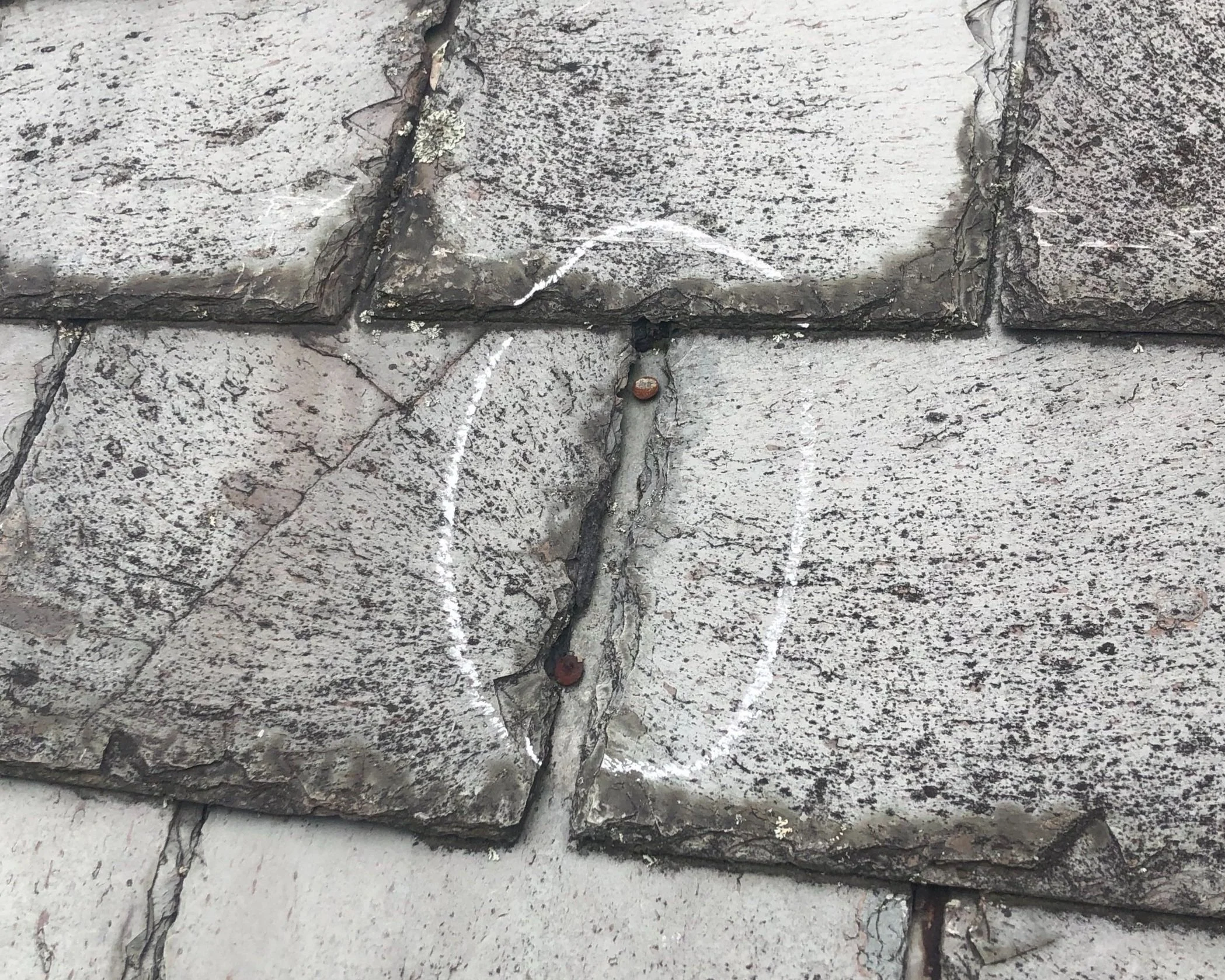
Slate Roof Repair
Inspections, leak finding, high-quality slate replacements, flashing work, chimney removal, snow guards, valleys, etc.
-
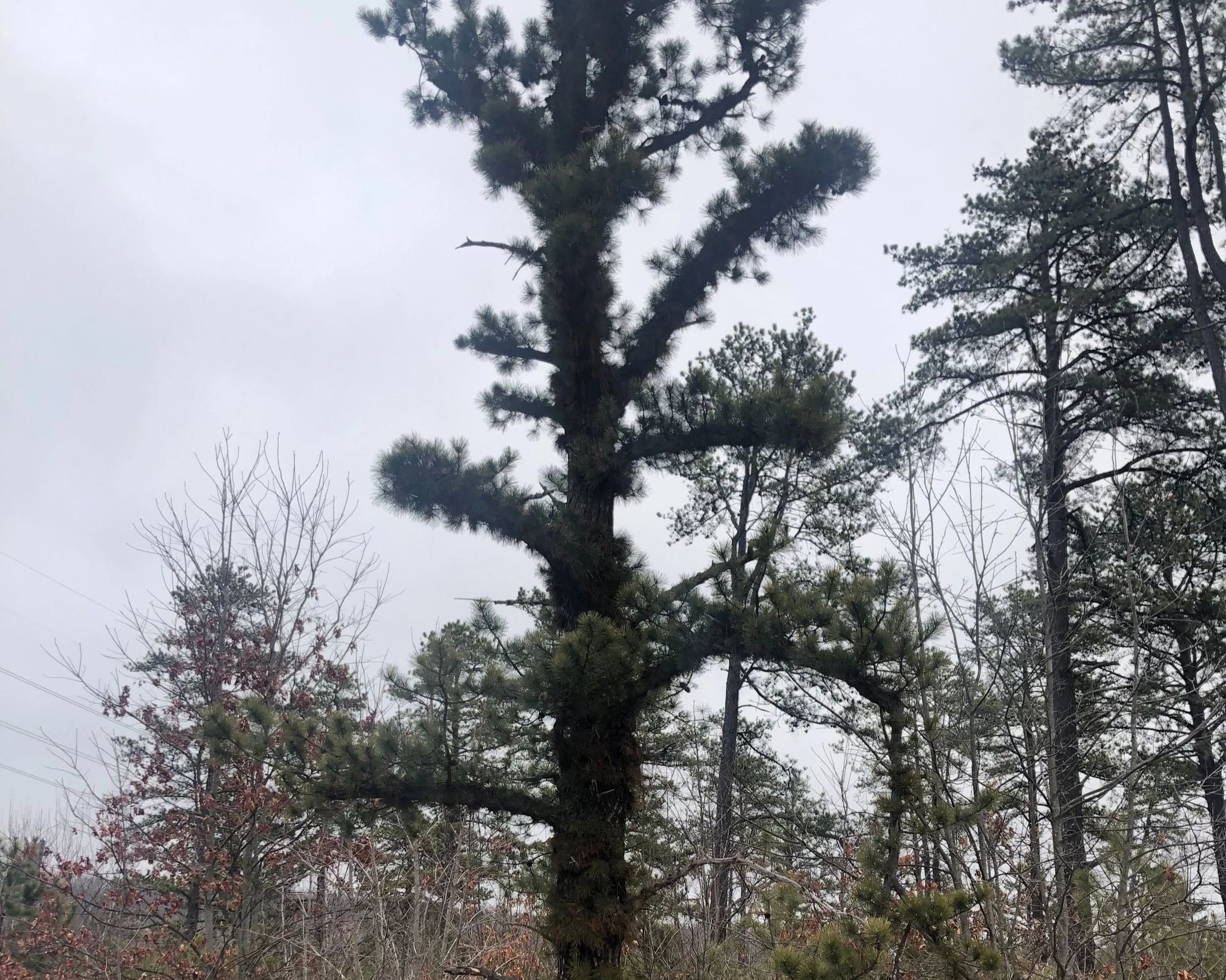
Tree Work
Cutting down backyard trees, removing limbs, branches, etc.
-
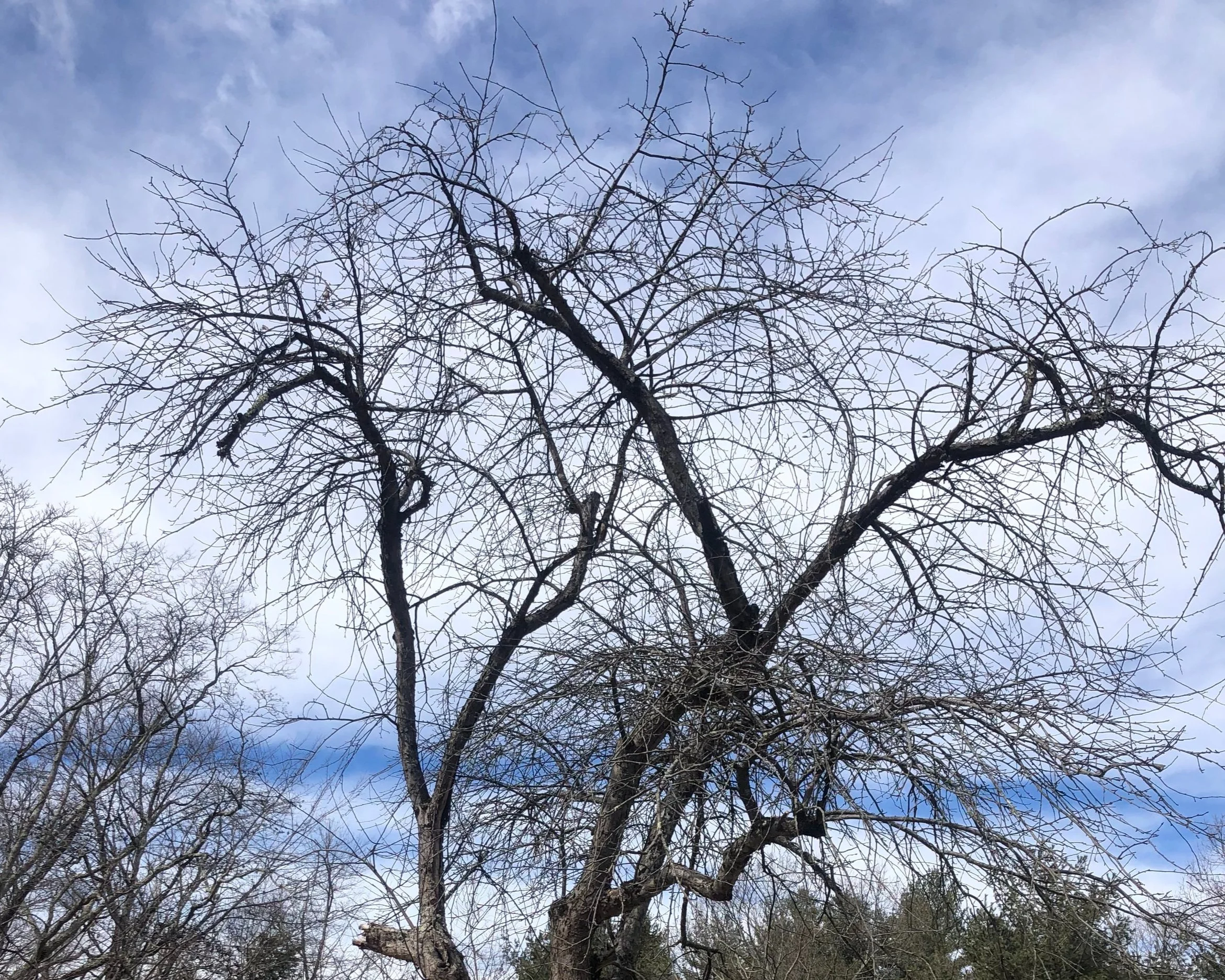
Apple Tree Pruning
Restoring old trees, caring for young trees, consultations on fertilizing, mouse guards, etc.
-
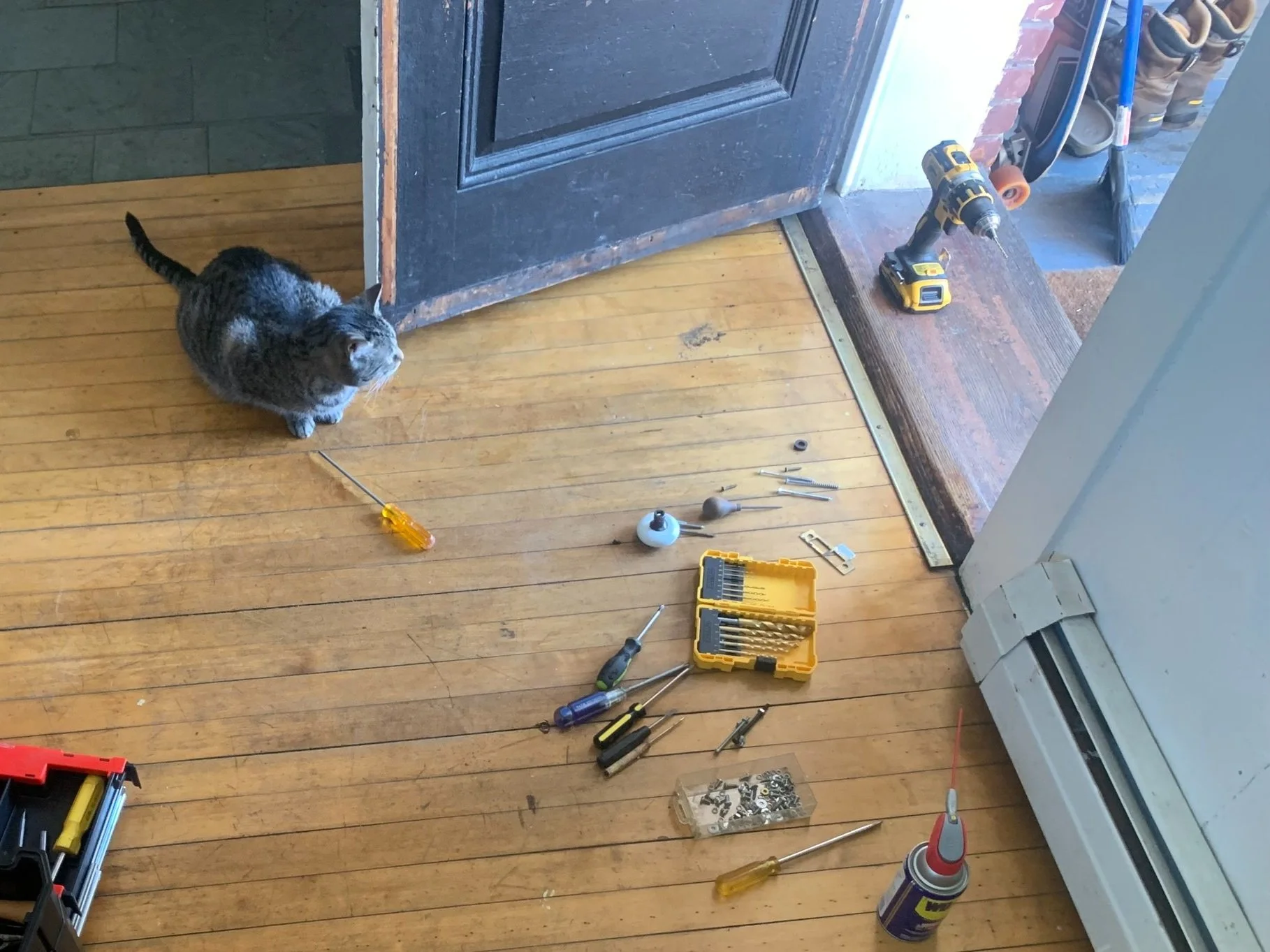
Old Door Repair
Adjusting striker plates and re-hanging doors; maintenance and revival of mortise locks (old-style doorknobs).
-

Odd Jobs
Light carpentry, installations, etc.
SLATE FAQs
What are the basic characteristics of slate as a building material? What are its strengths and weaknesses?
The extraordinary durability and longevity of slate and slate roofs is surprising to many, and may be difficult to comprehend. I have seen 350-year-old slate gravestones that look like they were carved a week ago, the chisel marks seemingly still fresh from the workshop. Some roofs in Europe are 500 years old and going strong. Thus, slate is often capable of outliving multiple generations of flashing.
Together with slate’s hardness and durability comes brittleness. This means that longevity is not automatic but assumes regular maintenance and repair, on the level of some attention often needed every 5-10 years. Without adequate room to expand, contract, and flex—to move and heave—slates crack and sometimes break. If a nail or slate hook is riding too high, it forces up the overlying slates—which, if unable to bend and make contact with the surrounding slates while the roof is shedding snow, will break. If slates are glued together with tar or silicone, they often break and leak, and missing bib flashings cause leaks as well. Eve edges and impact zones in valleys are areas that require strong slates properly hung, as well as more frequent repairs.
Some lower quality slates, as well as scattered slates on higher-quality roofs, do absorb water, freeze, and soften over time. Many roofs in the Connecticut River corridor are made with VT Grey-Green slates (also known as Sea-Green and Semi-Weathering Green), some of which—depending on iron content—may flake, delaminate, and weaken to an extent that they need to be replaced after about a hundred years of life. At the same time, in the aggregate VT Grey-Green slates are among the most durable in the world, according to slate roof expert Joseph Jenkins and others.
How are slate roofs best repaired?
Stainless steel slate hooks allow for local replacements at or above the level of the roof as a whole, something that is not true of any other slate repair system so far as I know. Although widely practiced, the nail-and-bib method of doing a local repair often fails when the bib flashing slides down, revealing the nail head to the weather and creating a small leak. By contrast, a slate hung by a stainless hook at the downslope edge stands as fair a chance of never leaking and never needing further attention as any other slate on the building. Despite its power, the stainless slate hook has only recently been adopted, and much of the work I do consists in rectifying several generations of bad repairs.
My use of the slate hook, as well as other methods of slate repair and flashing work, is based on Joseph Jenkins’ The Slate Roof Bible (3rd edition) and the National Slate Association’s Design and Installation Manual (2010).
How do you get access to the roof? Is it safe?
I ensure safety (for myself, and also for the slates) by using different lengths of aluminum ladders laid directly on the surface of the roof, and by always working from a correctly positioned ladder. Ladders hung from roof peaks by “ridge hooks” (a curved arm that reaches from the top of the ladder over the ridge) distribute the weight of the ladder, worker, slates, tools, etc., into the rafters of the opposite side of the the roof. By being moved along the peak, ladders with ridge hooks give access to the different parts of the roof below. A second ladder can be strapped to the lower end of the one hung from the ridge, allowing for an articulating joint and access to a valley. Depending on the structure of the roof and the size of the working area, I also use roof brackets and planks. All these means ensure a stable yet mobile working position, and at the same time minimize unintended damage to existing slates.
The dangers of working on roofs can be compared to those of driving on a busy interstate: a simple misstep can quickly lead to serious injury or death; yet, observation and monitoring of the evolving situation, if calm and continuous, and if coupled with well-defined responsive protocols (most crucially: when in doubt, slow down), bring the chance of error sufficiently low. The risk never goes away, but it is managed to a level within toleration.
Slate outcrop on Grape Island in Boston Harbor. (Photo: Harbor Beacon 2013)
What is slate, after all?
Slate is extremely fine-grained mudstone that has been subjected to low-grade regional metamorphism (mountain building) and compression. In commercial slate deposits, the fine grain size is due to sedimentation in a deep-marine environment, in which current levels are extremely low and grain size proportionally small. VT Weathering Green slate is material originally deposited in major crustal rift basins that formed on the margin of an earlier, smaller version of the North American continent during the breakup of the supercontinent Rodinia, in late precambrian and Cambrian time. Later, as this material was weakly metamorphosed—folded, faulted, sheared, stressed, heated, and re-crystallized, but not intensely enough to form large mica grains—it became the durable and workable slate that exists today. Metamorphosis was part of the processes of continental accretion and collision that gave rise to the Appalachian mountain belt over the course of the Mesozoic. Much later, in the Cenozoic, uplift, erosion, and glaciation exhumed the rocks of VT’s ‘Slate Valley,’ bringing them to the bedrock surface.
In all slates, the tectonic pressures are enough to recrystallize and realign the flakes of ‘platy minerals’ (mica, clay, etc.) along parallel planes, from their original randomly jumbled sedimentary orientations, creating metamorphic ‘foliation.’ As Wikipedia reports, “[slate] is the finest-grained foliated metamorphic rock. . . . The foliation in slate, called ‘slaty cleavage,’ is caused by strong compression in which fine-grained clay forms flakes to regrow in planes perpendicular to the compression.” These planes, which split into flat surfaces, reflect the regularity and geometry of tectonic forces interacting with the regularity and geometry of clay mineral chemistry; they are not to be confused with layers of sedimentary bedding.
At higher metamorphic grade, slate becomes ‘phyllite,’ with the foliation (cleavage) determined not by tiny clay grains, but by larger mica grains created through metamorphosis. ‘Schist’ has larger mica grains still. Large grains of mica make such rocks more crumbly than slate, in which only the reorientation and parallel flaking of the smallest clay grains determines foliation, and in which no larger mineral grains exist, being neither deposited in the original sedimentary environment, nor yet created through further metamorphism.
Slate’s combination of metamorphic recrystallization, on one hand, and very small grain size, on the other, make it a relatively uniform and workable material with extraordinary longevity. At the same time, since all geology is local as well as global, the qualities and properties of slate will vary from region to region, quarry to quarry, bed to bed, block to block, and—albeit slightly—from individual slate to individual slate.
RECENT WORK
Scattered repairs
Installing new valley flashing (20oz copper, formed in-place)
Pruning an old apple tree
Doctoring an old mortise latch and doorknob: from unpredictable dysfunction to . . . perfect effectiveness.
What Clients Say
-
"You're a healer. You're a healer."
-Walter Mucha, Brookline MA
-
"Willis quickly found and repaired two leaks that threatened my computer and musical instruments. We then had him do preventative work on the roof as a whole. I'm glad to know a local slate roofer with such dedication to his craft."
-Galen Huckins, Turners Falls MA




